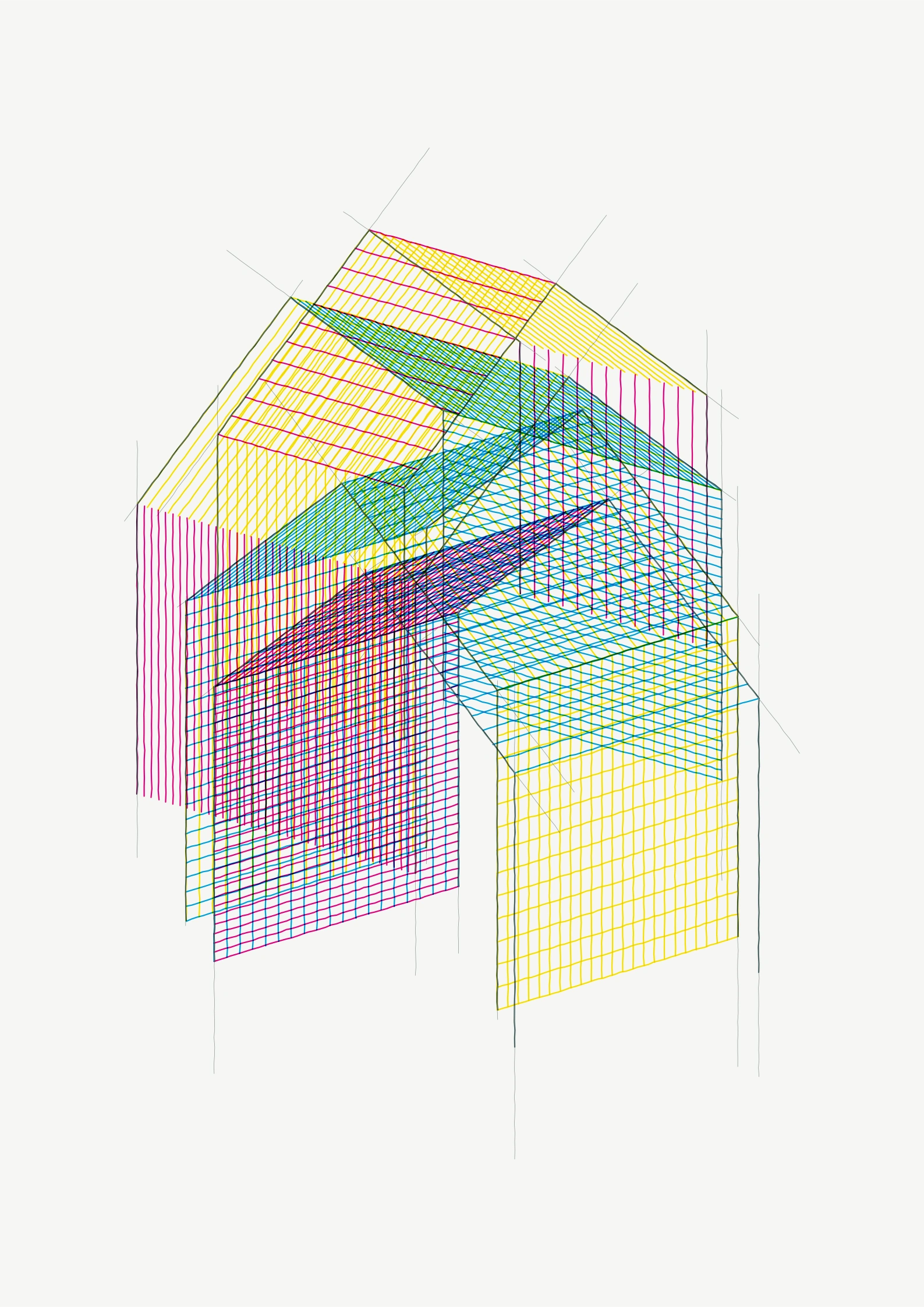

Three continuous lines in cyan, magenta, and yellow, each with slightly different distortion values. This is the first finished plot. It came a bit too dense, so I'm going to make a new one today with more whitespace.


Three continuous lines in cyan, magenta, and yellow, each with slightly different distortion values. This is the first finished plot. It came a bit too dense, so I'm going to make a new one today with more whitespace.
Finalising the second layer (magenta) on this piece. This is a first try and I need to make some tweaks still.




We started on a huge, exciting project and there's very little time for other things right now (more on that later). But today I finally got around to plotting a few iterations of this sketch. Cold-pressed cotton paper with CMYK ink using fountain pens and pencil.




Recently started buying CDs again. I forgot how lovely the whole experience is. In part the audio quality, but best of all are the booklets. Some of them really stand out.

Just finished Careless People by Sarah Wynn-Williams. Understandable that Zuckerberg wants a ban because it puts him in a terrible light. The things Facebook did, and didn't do, for the sake of the bottom line, just horrifying.




Building further on previous experiments, these are quadtrees generated with points derived from #generative mountain landscapes.






Further experimentation with quadtrees. It's interesting to see the emergence of flow fields when the rectangles get very small.
Colours used here are just CMY, but one or two colour components are randomly diluted fifty per cent to get more variation.
The past few weeks I've been moving services away from US providers to their European counterparts. Now I'm looking into buying only European-made products as well.
For anyone moving in the same direction, this is a great resource: www.buy-european-made.eu




Fun with quadtrees. I wanted to implement this for a long time but somehow never came to. These are configured to allow just one point per tile.




Implementing different algorithms to generate cubic and quadratic bezier splines from open and closed polygonal shapes. Never realised there are so many approaches.
#svg






Exploring moiré in combination with process colours (CMYK). These are just four continuous lines–each in one colour–and slightly offset distortion values, resulting in interesting colour blends.
Curating a small selection was quite difficult because every iteration was interesting. These will be realised as A4 pen plots. Ink is already in and tomorrow the new pens arrive, and I can't wait to get started!





I really like this sketch from #genuary day 20 so I'm preparing it for A4 penplots. I've just ordered new fountain pens and lightfast ink and I'm looking forward to starting experimenting with them.
Still in doubt about the edition size though. I'm thinking about taking an uncurated list of 25 or 50 sequential iterations of the sketch.

#Genuary put me on a roll, and I miss it. Everywhere I look I see inspiration for new pieces. So I decided to create a weekly(ish) work and pen-plot a series of iterations.
Here's the first one: “Keeping it together”.

After adding a lot of extra modules to my toolkit during #genuary2025, I'm now polishing up everything. One of them is an Okhsl picker, and while testing its performance against HSL and other spaces, it became clear how bad HSL actually is when using it with interpolations. #colorpicker

A #ptpx exchange card from Victor Felder came in.

Day 31 of #genuary2025: “Pixel sorting.”
The only time this #genuary that I'm using bitmap data. Portraits of me (by Mick Michel) projected in 3D, and the individual pixels sorted on the z-axis according to their perceived luminance.
Thanks Piter Pasma and everyone involved for organising Genuary!

Day 21 of #genuary2025: “Create a collision detection system (no libraries allowed).”
This is one I overlooked. Sheets falling on top of other sheets and the occasional ball.
#genuary

Day 23 of #genuary2025: “Inspired by brutalism.”
#genuary

Day 24 of #genuary2025: “Geometric art - pick either a circle, rectangle, or triangle and use only that geometric shape.”
Catching up on the days I didn't have the time to make an entry. Here are circles, circles, and, again, more circles.
#genuary